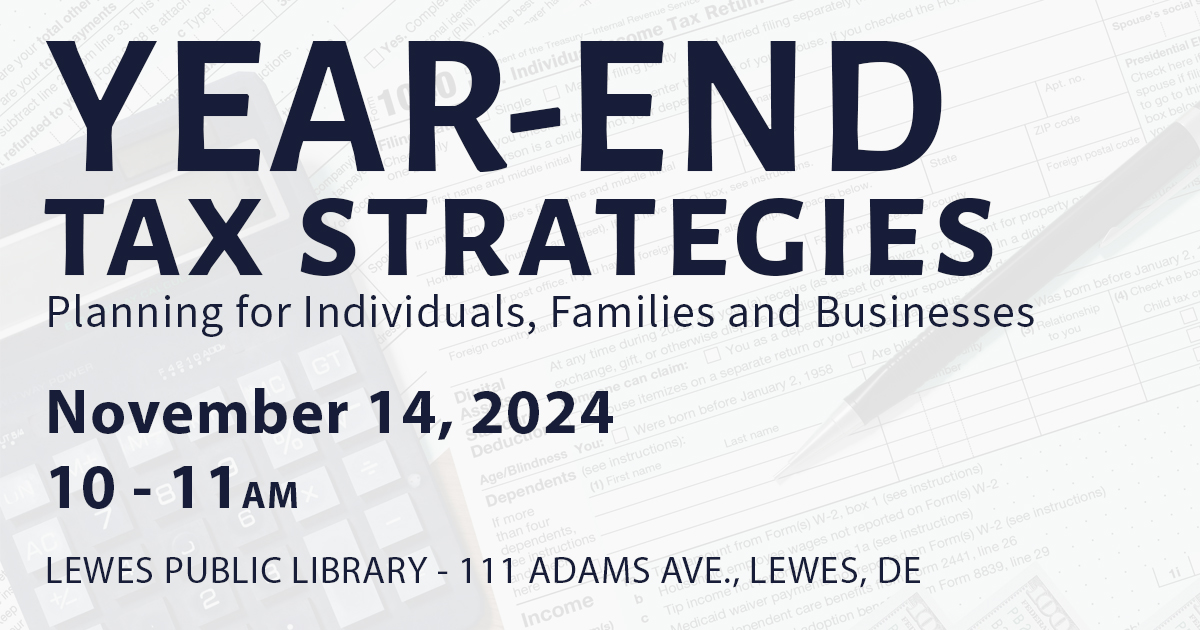Have you set up Section 529 college savings plans for your children or grandchildren? The major advantage of 529 plans is that qualified withdrawals are always federal-income-tax-free and usually state-income-tax-free. But there can be limitations on withdrawal rights and not all 529 withdrawals are tax-free, even in years when significant college costs are incurred. Here’s what you should know before you request a withdrawal.
Withdrawal Options
Typically, a parent or grandparent is the “account owner” or “plan participant.” Plans commonly use both terms to describe the person who established and controls the account. Here, we’ll refer to this person as the account owner. The term “account beneficiary” refers to the student that the 529 account was established for (usually a child or grandchild).
When it’s time to take withdrawals, account owners have four options:
- Have a withdrawal check cut in their own name,
- Have an electronic funds transfer made into their own account,
- Request a withdrawal issued in the name of the account beneficiary, or
- Arrange for a direct payment to an educational institution for the benefit of the student.
To access the funds, account owners must submit withdrawal requests to the 529 plans.
Accounts Funded with Custodial Account Money
There are withdrawal restrictions on a 529 account funded with money that came from a custodial account set up for the 529 account beneficiary under a state’s Uniform Gift to Minors Act (UGMA) or Uniform Transfer to Minors Act (UTMA). Specifically, any money taken from the custodial account must be used for the benefit of the person for whom the custodial account was established.
So, you can’t take a 529 account withdrawal for yourself if the 529 account was funded with money from a child’s or grandchild’s custodial account. Because the money in the 529 account came from the custodial account, the 529 account money legally belongs to the child or grandchild, not you — even if you set up the account.
On the other hand, if the 529 account was funded with your own money, the money in the account is fair game. You can take withdrawals and do whatever you want with them, subject to the federal tax implications explained below.
Taxable Withdrawals
It’s important to realize that withdrawals may sometimes be taxable — even in years when the student incurs significant college costs. Withdrawn earnings are always federal-income-tax-free and penalty-free when total withdrawals for the year don’t exceed the account beneficiary’s adjusted qualified education expenses (AQEEs) for the year.
To calculate AQEEs, add up the following expenses incurred:
- Tuition and related fees,
- Room and board (only if the account beneficiary carries at least half of a full-time course load),
- Required books, supplies and equipment,
- Computer hardware, peripherals, software and internet access, and
- Special needs services.
Next, subtract any federal-income-tax-free educational assistance, which includes costs covered by:
- Tax-free Pell grants,
- Tax-free scholarships, fellowships and tuition discounts,
- Tax-free veterans’ educational assistance,
- An employer’s tax-free educational assistance program, and
- Any other tax-free educational assistance (other than assistance received in the form of a gift or an inheritance).
Tax-free educational assistance also includes any costs used to claim the American Opportunity credit or the Lifetime Learning credit.
When withdrawals during the year exceed AQEEs for the year, all or part of the withdrawn earnings will be taxable. When withdrawals don’t exceed AQEEs, all the withdrawn earnings are federal-income-tax-free.
Hypothetical Examples
To illustrate how this works, let’s suppose Chloe’s college expenses total $50,000 for 2024. However, she receives $35,000 in tax-free scholarships and tuition discounts, so her AQEEs for the year are only $15,000 ($50,000 minus $35,000).
Chloe is the beneficiary of a 529 college savings plan account that her father Chuck set up years ago. In 2024, Chuck arranges for a $50,000 withdrawal. It consists of $10,000 of earnings and $40,000 of tax basis from contributions to the account. Chuck uses the money to cover the following:
- $15,000 of Chloe’s AQEEs,
- Her transportation expenses and other incidentals, and
- A new car to reward Chloe for all her hard work and scholarship wins.
The $15,000 of AQEEs is only 30% of the withdrawn amount ($15,000 divided by $50,000). Therefore, only 30% of the $10,000 of withdrawn earnings ($3,000) is free from federal income tax. The remaining $7,000 of earnings ($10,000 minus $3,000) is taxable income that must be reported as miscellaneous income on Chloe’s 2024 federal tax return. The entire $40,000 of withdrawn basis is federal-income-tax-free.
Depending on Chloe’s overall tax situation and whether the so-called “kiddie tax” applies to her, the federal income tax hit on the $7,000 of taxable withdrawn earnings may be significant. (The $7,000 counts as unearned income for kiddie tax purposes, if applicable.)
Account Owners Taking 529 Withdrawals for Themselves
If a 529 account was funded with your own money (as opposed to money from a custodial account), you’re free to change the account beneficiary to yourself and then take then federal-income-tax-free withdrawals to cover your own AQEEs if you go back to school.
If you take a withdrawal that’s used for other purposes, the withdrawn earnings must be reported as taxable miscellaneous income on your federal income tax return. Taxable amounts may also get hit with a 10% penalty tax (see below).
Continuing with the previous example, let’s suppose Chloe has no AQEEs for 2024 because all her costs were covered with scholarships and tuition discounts, so Chuck (the account owner) decides to take $50,000 out of the account to buy himself a new car. Because Chloe (the account beneficiary) has no AQEEs for the year, the entire $10,000 of earnings included in the withdrawal is taxable, and Chuck must report that amount as miscellaneous income on his 2024 federal income tax return.
In this situation, it’s not entirely clear whether Chuck or Chloe must report the $10,000 as taxable income. However, somebody must report it, and presumably, the IRS isn’t going to object to this treatment as long as somebody reports the $10,000 as income.
10% Penalty on Withdrawals Not Used for Education
Some or all of the earnings included in a 529 account withdrawal must be reported as taxable income when the withdrawal exceeds the account beneficiary’s AQEEs for the year. Plus, according to the general rule, the taxable amount of earnings may be hit with a 10% penalty tax.
However, under an exception to the general rule, the 10% penalty tax doesn’t apply to earnings that are only taxable because the account beneficiary’s AQEEs were reduced by the following:
- Tax-free Pell grants,
- Tax-free scholarships, fellowships and tuition discounts,
- Tax-free veterans’ educational assistance,
- Tax-free employer-provided educational assistance,
- Any other tax-free educational assistance, and
- Costs used to claim the American Opportunity credit or Lifetime Learning credit.
The 10% penalty tax also doesn’t apply to earnings withdrawn if the account beneficiary dies, becomes disabled or attends a U.S. military academy (such as West Point, Annapolis or the Air Force Academy).
Withdrawals for K-12 Tuition and More
You’re allowed to take federal-income-tax-free withdrawals from a 529 account for other education-related reasons besides college, including:
K-12 tuition. The withdrawals can generally be used to pay up to $10,000 per year for the account beneficiary’s K-12 tuition costs at a public, private or religious school.
Registered apprenticeship programs. The withdrawals can be used to pay for fees, books, supplies and equipment (usually meaning tools of the trade) required for the account beneficiary to participate in an apprenticeship program. To qualify, the program must be registered and certified with the Secretary of Labor under Section 1 of the National Apprenticeship Act.
Student loans. Withdrawals can generally be used to pay up to $10,000 towards the account beneficiary’s college loans. However, the $10,000 figure is a per-student lifetime limit. Under special rules, you can also pay up to $10,000 towards college loans of the account beneficiary’s sibling.
Check your plan: Some plans may not allow state-income-tax-free 529 account withdrawals to cover payments toward K-12 tuition or student loans. Withdrawals to cover those payments could trigger claw-backs of previously claimed state income tax benefits.
Get It Right
The rules for 529 withdrawals aren’t as simple as you might think. Some withdrawals might be partially taxable. But on a positive note, federal-income-tax-free withdrawals can now be taken to cover more things than was the case years ago — such as K-12 tuition and payments towards college loans. Contact your tax advisor if you have questions or want more information.
|
The IRS Knows about 529 Account Withdrawals For any year that a 529 withdrawal is taken, the plan issues IRS Form 1099-Q, “Payments from Qualified Education Programs (Under Sections 529 and 530),” by February 1 of the following year. The form is sent to the person who received the withdrawal (either the account owner or the account beneficiary). It’s also sent to the IRS. Box 1 of Form 1099-Q shows the total amount withdrawn from the 529 account during the year. Assuming the account has increased in value over time, each withdrawal includes some earnings (box 2) and some tax-free basis from contributions (box 3). Withdrawn earnings may or may not be tax-free. They also could get hit with a 10% penalty tax (see main article). Withdrawn basis amounts are always free from federal income tax and the penalty tax. |
PKS & Company, P. A. is a full service accounting firm with offices in Salisbury, Ocean City and Lewes that provides traditional accounting services as well as specialized services in the areas of retirement plan audits and administration, medical practice consulting, estate and trust services, fraud and forensic services and payroll services and offers financial planning and investments through PKS Investment Advisors, LLC.
© Copyright 2024. All rights reserved.
Brought to you by: PKS & Company, P.A.





